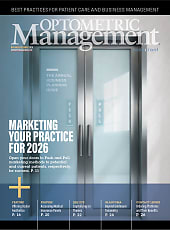Presbyopia can be visually challenging for our patients, especially for those wearing daily disposable contact lenses. There are many presbyopes and emerging presbyopes who are wearing a variety of contact lens combinations, and would like to get a little better vision out of them. Whether this is at distance, computer range, or near, these patients should be educated that visual compromise is expected. New daily disposable contact lens technologies (single vision, toric, multifocal, and toric multifocal) are consistently improving. But, there also may be eye drops that can enhance the vision of presbyopic contact lens wearers.
There are now a few US Food and Drug Administration (FDA)-approved eye drops on the market that can improve near vision. A 1.25% pilocarpine HCI ophthalmic solution was the first to market in this category, with a 0.4% pilocarpine ophthalmic solution and an aceclidine ophthalmic solution following with their FDA approvals. All have their own unique mechanisms of action. It is important to understand each mechanism of action, the onset and duration of visual changes, and the safety profile of each eye drop, so we can manage our patients' expectations.
In their own unique ways, each pharmacologic treatment induces miosis and, therefore, increases the patient’s depth of focus. Regarding contact lens wearers, these eye drops have the potential to be synergistic in certain circumstances with both single vision and multifocal daily disposable designs.
As with any eye drop, it is recommended to remove one's contact lenses prior to dosing and wait at least 10 minutes after dosing before reapplying them.
Presbyopia stinks all around and those patients who have it could be our toughest patients to make happy. The good news: Presbyopia drops could be another tool for eyecare providers to utilize with this category of patients.
This content was supported via unrestricted sponsorship



